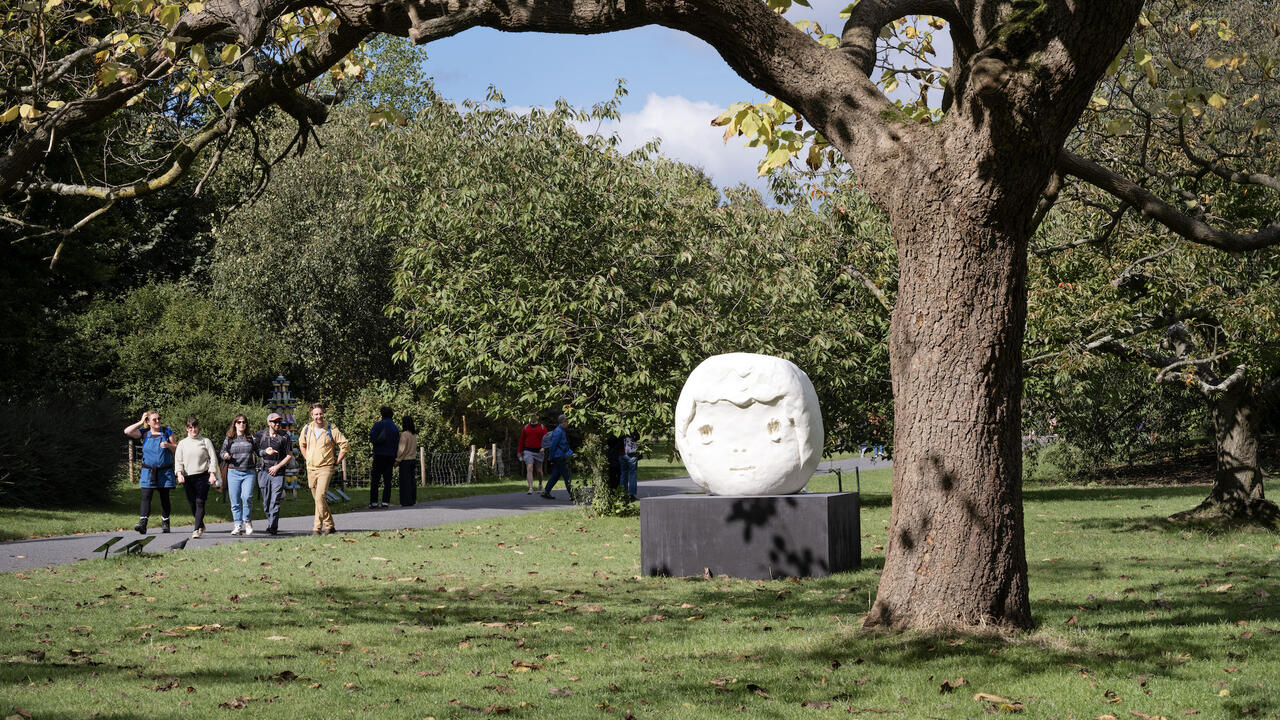Liverpool Biennial 2008
Various venues, Liverpool, UK
Various venues, Liverpool, UK

As even the most casual student of Scouse semantics is aware, the phrase ‘made up’ – which subtitles this, the fifth Liverpool Biennial – has an auxiliary meaning in Merseyside. A Liverpudlian who claims to be ‘made up for you’ is possibly confessing to directed self-invention or use of cosmetics but more likely just pleased on your behalf. The idea of a biennial devoted to the elusive condition of happiness is a pretty interesting one. It’ll be someone else’s baby, though, because ‘Made Up’ here apparently connotes invention, imagination and alternative realities. Which must have made selecting the artists a real bitch, no? No. Free to choose virtually anyone, the curators decided upon biennial warhorses such as Ai Weiwei, Jesper Just, Sarah Sze, David Altmejd, Tomas Saraceno, Annette Messager and Yayoi Kusama. Let nobody say that the European Capital of Culture 2008 can’t put on a biennial that, at least on paper, looks just like everyone else’s.
Then again, ‘Made Up’ – led by artistic director Lewis Biggs – clearly isn’t precision-aimed at people who are perpetually at airports and press conferences. Actually it’s not clear who it’s aimed at. Big but navigable – its dozens of venues gratifyingly permeating the whole urban centre – and almost entirely admission fee-free, as well as being replete with public projects and numerous satellite shows, the show is organizationally exemplary. Tone-wise, it oscillates wildly. There are blatant tabloid draws, such as Alison Jackson’s paparazzi pastiches at Tate Liverpool and Ai’s cheerfully dumb giant spider, furred with flashing lights on a web stretched high across the Exchange Flags plaza. In Pilkington’s Warehouse, near the docks, you can go light, then go local: step into the 2001-style infinite mirroring of Kusama’s room strung with coloured bulbs, wonder at Saraceno’s buoyant Aerogel balloons, lose your lunch in Leandro Erlich’s one-bedroom furnished flat mounted on a carousel and then consider some high-chroma landscapes by Liverpudlian painters.
Set against these eager-to-please feints are segments such as the seven-artist selection at FACT (Foundation for Art and Creative Technology): muffled and obscure, starved of marquee names and more coherently pinned to imaginative capacities. Ulf Langheinrich’s semi-abstract digital video LAND (2008), which features two intersecting algorithms for making noise pulsed by red strobes, conjures an apocalyptic, three-dimensional, grandly morphing topography that comes uneasily stripped of referentiality. Terrence Handscomb’s film Der Himmel über Kalifornien (The Sky over California, 2007) asks one to reconcile grim footage of toxic sunsets and smiling yearbook photographs of youths with a German voice-over ominously recounting dates and a panicky soundtrack of tremulously isolated backing vocals from old Beach Boys songs. Big dark powers thrash beneath the surface of these works, but their theses have to be ‘made up’ by the viewer.
Unsurprisingly, there’s a finite quota of the sinister and smudgy in a show with bouncy colour-chart logos and a local-council label like ‘Made Up’. But the middle ground visible elsewhere – neither bread and circuses nor worrisome denseness – isn’t a great compromise, harvesting results that look clever at first but then clearly aren’t. See, for instance, the Bluecoat Gallery’s exploration of ‘imagined futures’, convening one of Sarah Sze’s frozen orchestrations of building materials, a frieze of the Royal Art Lodge’s whimsically morbid paintings (bathetic cartoon deaths, coy tabulations of records and books), and David Blandy’s installation apostrophizing his search for Mingering Mike, a man obsessed with fashioning record sleeves for albums he never recorded. All this work is ‘imaginative’ and individually viable, but together it succumbs to a compound air of would-be-democratic cutesiness, a quirky veneer that doesn’t disguise the artists’ really having very little to do with each other.
Something similar could be said of the institutionally tasteful ‘journey towards the unreal’ at Tate Liverpool. Behold a phalanx of Luisa Lambri’s lambent photographic studies of chiaroscuro in room corners; a Rodney Graham photograph, Dance!!! (2008), squinting at myths of the American West, in which Graham capers in a saloon above a gunslinger’s ordnance; an Omer Fast film about the making of a documentary on a suicide bombing, Take a Deep Breath (2008), that fleetly conflates registers and formats. There’s an exhausting sense, looking at such arrays – slightly different versions of things you’ve seen before – of mindless and unstoppable mechanisms at work: the demands of artists’ and dealers’ careers, the demand that Liverpool perform a regular impression of a biennial, complete with some catch-all or other, and that this year it should be something cheery, vague, populist and superficially deep. The show incandesces fitfully outdoors, although most obviously in a pre-installed outrider: the accessible architectural uncanny of Richard Wilson’s Matta-Clark-trumping Turning the Place Over (2007), an eight-metre ellipse sliced from an office block’s frontage and restlessly spun, attached to a giant rotator, through three dimensions in the gap. Elsewhere, as art works piled up without apparent consequence or purpose except to fill a city with expressions of cultural fecundity, the awful question that kept clanging through this viewer’s head was: Why? And the answers that came didn’t have much to do with art.
























